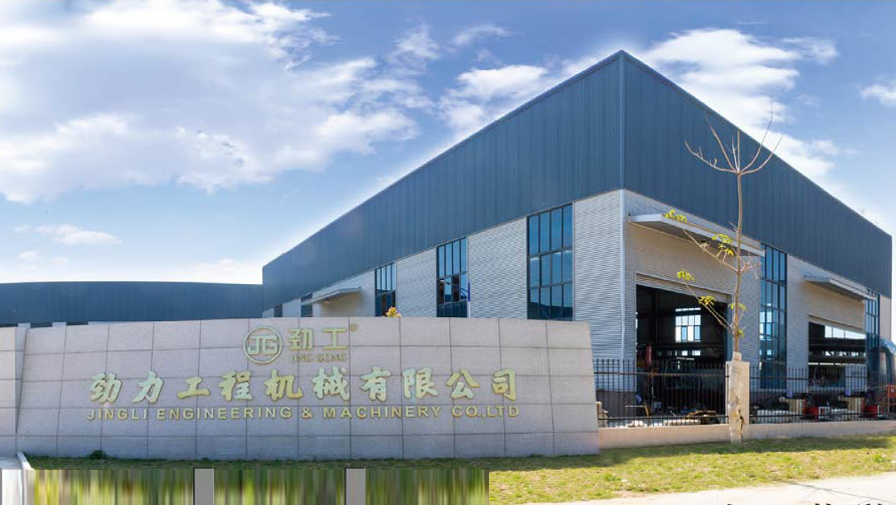-
About UsQuanzhou Jinli Engineering Machinery Co., Ltd., established in July 2006, is a professional manufacturer specializing in design, development, production, and sales of equipment machinery.

-
ProductsConstruction machinery: tire excavator, crawler excavator; Forestry machinery: bamboo and wood (sugarcane) picking and loading machines, multifunctional transfer machines; Harvesting machinery: whole rod sugarcane combine har

-
NewsJinggong adheres to the business philosophy of "technology supporting enterprises, quality bearing heavy trust", constantly develops new products guided by market demand, and presents satisfactory products to our customers.

-
ServiceSince its establishment, we have always adhered to the service philosophy of "being close, caring, full lifecycle, and full value chain".

-
Contact UsCorporate Honors We provide our customers not only with advantageous products, technologies, and services, but also with a comprehensive solution to meet diverse needs, thereby continuously creating value for customers and he


Online Inquiry
JINGONG
NEWS
Innovative New Compaction Wheel for Excavators: Enhancing Efficiency in Construction Projects
TIME:2025-04-16 10:20
When it comes to heavy machinery, excavators are among the most versatile tools in the construction and engineering sectors. A new compaction wheel for excavators is an exciting advancement that significantly enhances the utility of these machines. Designed specifically for compacting soil, this attachment allows excavators to perform a dual function, thus streamlining operations on construction sites.
The primary advantage of using a new compaction wheel is its ability to efficiently compact different types of soil, including granular, cohesive, and mixed materials. This is crucial for a variety of applications, such as preparing the ground for foundations, road building, and landscaping projects. By optimizing soil density, the compaction wheel plays a vital role in preventing future ground settlement, ensuring the stability and longevity of structures.
Another noteworthy feature of the new compaction wheel is its adaptability. Unlike traditional compaction equipment, which often requires distinct machines or extensive manual intervention, this attachment can be used directly with an excavator. This not only saves on operational costs but also reduces the amount of time spent on site transitions. With a simple attachment process, operators can switch between digging and compacting tasks, significantly increasing overall productivity.
Moreover, the design of the new compaction wheel often incorporates advanced engineering techniques that enhance its performance. For example, many models are designed with multiple compacting surfaces or adjustable settings, allowing operators to customize their compaction efforts based on specific project requirements. This level of precision ensures that the work meets regulatory standards and project specifications without the need for multiple passes.
In addition to improving efficiency, the new compaction wheel can also contribute to sustainability efforts in construction. By achieving optimal compaction with fewer passes, the attachment minimizes fuel consumption and equipment wear. This leads to a reduction in carbon emissions associated with construction activities, aligning with the industry's growing focus on environmentally friendly practices.
In conclusion, the introduction of a new compaction wheel for excavators represents a significant step forward in construction technology. By enhancing efficiency, versatility, and sustainability, this innovative attachment not only improves the performance of excavators but also contributes to the success of various construction projects. As the construction industry continues to evolve, embracing such advancements will be key to meeting the demands of modern infrastructure development.
The primary advantage of using a new compaction wheel is its ability to efficiently compact different types of soil, including granular, cohesive, and mixed materials. This is crucial for a variety of applications, such as preparing the ground for foundations, road building, and landscaping projects. By optimizing soil density, the compaction wheel plays a vital role in preventing future ground settlement, ensuring the stability and longevity of structures.
Another noteworthy feature of the new compaction wheel is its adaptability. Unlike traditional compaction equipment, which often requires distinct machines or extensive manual intervention, this attachment can be used directly with an excavator. This not only saves on operational costs but also reduces the amount of time spent on site transitions. With a simple attachment process, operators can switch between digging and compacting tasks, significantly increasing overall productivity.
Moreover, the design of the new compaction wheel often incorporates advanced engineering techniques that enhance its performance. For example, many models are designed with multiple compacting surfaces or adjustable settings, allowing operators to customize their compaction efforts based on specific project requirements. This level of precision ensures that the work meets regulatory standards and project specifications without the need for multiple passes.
In addition to improving efficiency, the new compaction wheel can also contribute to sustainability efforts in construction. By achieving optimal compaction with fewer passes, the attachment minimizes fuel consumption and equipment wear. This leads to a reduction in carbon emissions associated with construction activities, aligning with the industry's growing focus on environmentally friendly practices.
In conclusion, the introduction of a new compaction wheel for excavators represents a significant step forward in construction technology. By enhancing efficiency, versatility, and sustainability, this innovative attachment not only improves the performance of excavators but also contributes to the success of various construction projects. As the construction industry continues to evolve, embracing such advancements will be key to meeting the demands of modern infrastructure development.
Related News
2025-04-25
Contact Us
No. 88, Pan Cuo, Jiaonan Village, Heshizhen, Luojiang District, Quanzhou City, Fujian Province
language
English
العربية
বাংলাদেশ
Български
Hrvatski
Česky
Dansk
Nederland
 Esperanto
Esperanto
Slovenski
Filipino
Suomi
Français
Maori
Georgian
Deutsch
Ελλάδα
ישראל
इंडिया
Magyarország
Ísland
Indonesia
Kyrgyz
ປະເທດລາວ
ဗမာ
 தமிழ்
தமிழ்
नेपाल
Norge
ایران
Polska
Portugal
România
Российская
Србија
 Slovak
Slovak
Србија
Bosanski
Slovenian
Беларус
España
Sverige
Точик
ประเทศไทย
Türk
Azərbaycan
Uzbek
 Afrikaans
Afrikaans
Việt Nam

